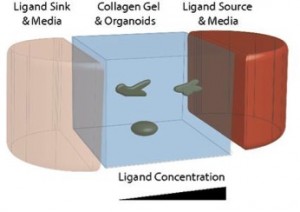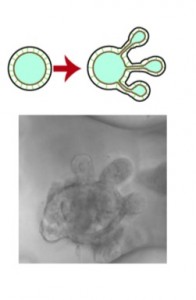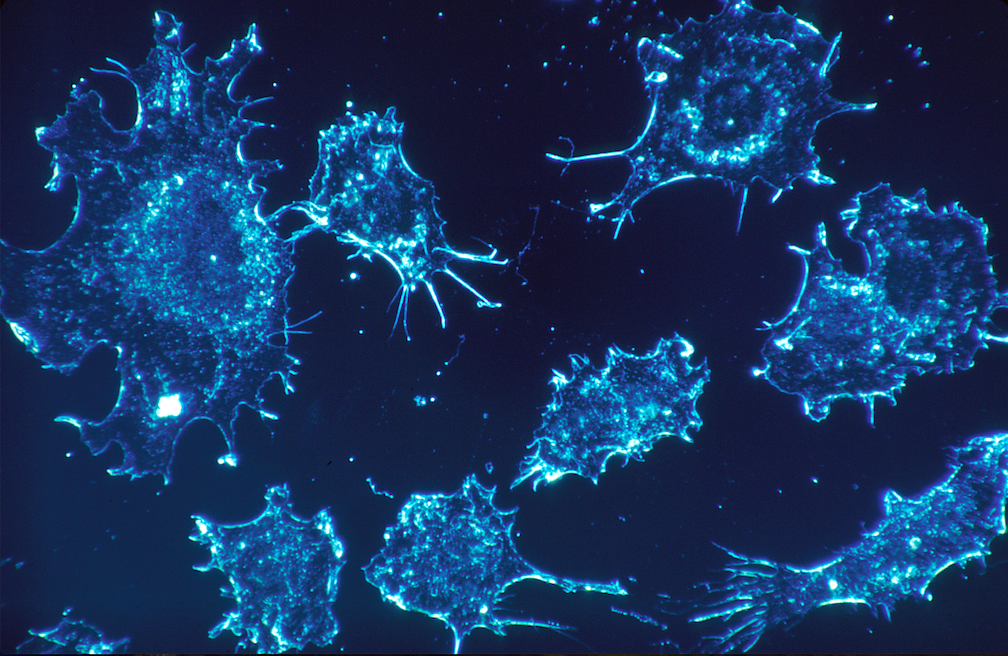In the classic children’s game of Telephone, an initial message, such as “the purple panda plays polo in picturesque Paraguay,” becomes any number of unexpected phrases by the end of the line. When just a few children pass the message, it is received relatively clearly and quickly. When the line is long, the message is jumbled and delayed. At a much smaller scale, cells pass signals just like a message is passed along in Telephone.
This cell behavior was only recently characterized in a collaboration between researchers at universities such as Yale, Purdue, Johns Hopkins, and Emory. “We used a microfluidic device which creates a defined fluid model. Picture food dye added to one end of a bathtub. If you keep supplying it at one end and removing it at the other, you will end up with a stable gradient,” said Andrew Ewald, associate professor of cell biology at Johns Hopkins and member of the Breast Cancer Research Program. In this case, epidermal growth factor (EGF), a growth-promoting protein, was used to create the gradient. The scientists placed cells derived from breast tissue at the center of the device and monitored them for growth and movement. Breast cells were used for study because they are highly responsive to EGF and quickly self assemble into mini organs, or organoids.

The team found that groups of four or five cells were best able to detect and respond to the EGF gradient by growing toward the higher concentration. The error associated with the signal-to-noise ratio (SNR) of the data supported this observation. A SNR of one indicates equal levels of signal and background noise. SNRs greater than one are indicative of strong signals, while those substantially smaller than one suggest overwhelming noise. Groups of three cells or fewer were unable to detect the gradient. On the other hand, in larger groups of communicating cells, so much noise was generated that the signal was muffled. The SNR was often 0.01 or below. This phenomenon can be compared to noisy chatter in a café: with more customers, a conversation becomes increasingly difficult to follow.
“Before we did this [experiment], people would believe that ‘the bigger the better,’ essentially to infinity, in signal detection by groups of cells,” said Andre Levchenko, John C. Malone Professor of biomedical engineering at Yale. “Instead, we found that you can have five cells or you can have 100 cells, and you’ll have the same advantage of multicellular communication due to the noise created,” he added.
Though cells convey different messages in different manners, they rely frequently on gap junctions, or small windows between the interiors of cells. Breast cells rely on these spaces to communicate information about the concentration of chemicals, nutrients, and proteins in the surrounding environment. Small molecules, such as EGF, move through gap junctions, delivering information to neighboring cells. In the fluidic device experiment, the line of growing cells formed a virtual arrow in the positive direction of the gradient. Growth is promoted toward higher concentrations of EGF in response to effective cell communication. To prove the reliance of breast cells’ communication on gap junctions, the scientists blocked the gap junctions with small molecule drugs. Cell growth continued, but it was not toward the region of higher EGF.
“This cell-cell behavior is something biologists have been observing for some time, so it is exciting that we have proof of it,” Levchenko said.

A related study was recently published by the Levchenko lab, which showed that newly developed blood vessels exhibit similar patterns of growth. “Cancer cells are hungry for nutrients, so they entice blood vessels to grow toward them by secreting a molecule similar to EGF called VEGF, or vascular EGF,” Levchenko said. “Blood vessels grow toward the tumor using collective gradient sensing,” he added. The researchers anticipate that further exploration of communication in other cell types will reveal analogous growth and response patterns.
This research has a wide range of applications because it provides insights into a fundamental aspect of cell behavior. Ewald said, “We have an incredibly detailed understanding of how single cells function, how they create energy and how they multiply,” adding, “We have a tremendous understanding of how organs work and what genes help to specify and control an organ, such as the lungs, heart, or, in this case, the breast. What we have a much lesser understanding of is how to bridge that gap.”
Down the road, additional studies regarding how groups of cells interact will likely help to inform new endeavors in medicine, assistant professor of physics Andrew Mugler said. Advances in the understanding of cell-cell communication mechanisms have already impacted the scientific community—but eventually, the application of these discoveries to the clinical setting may directly benefit the health of the public.

